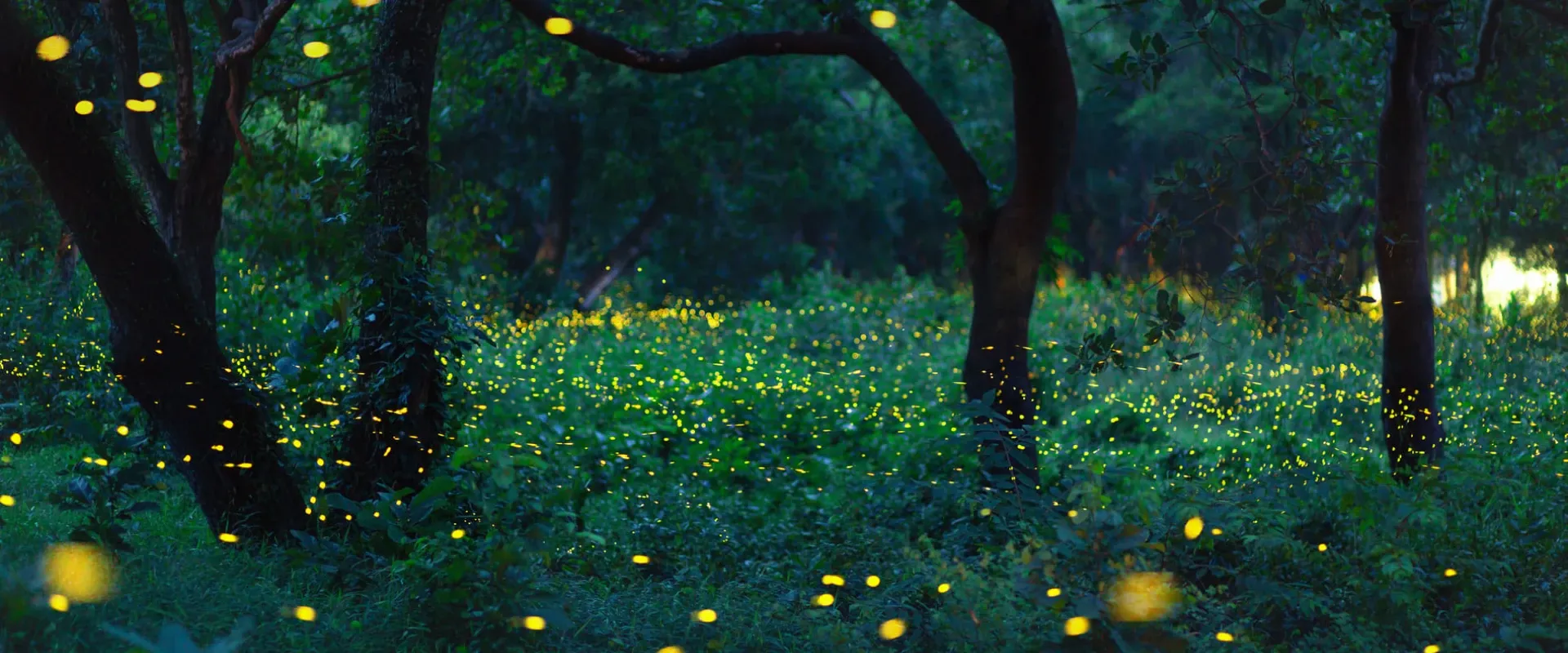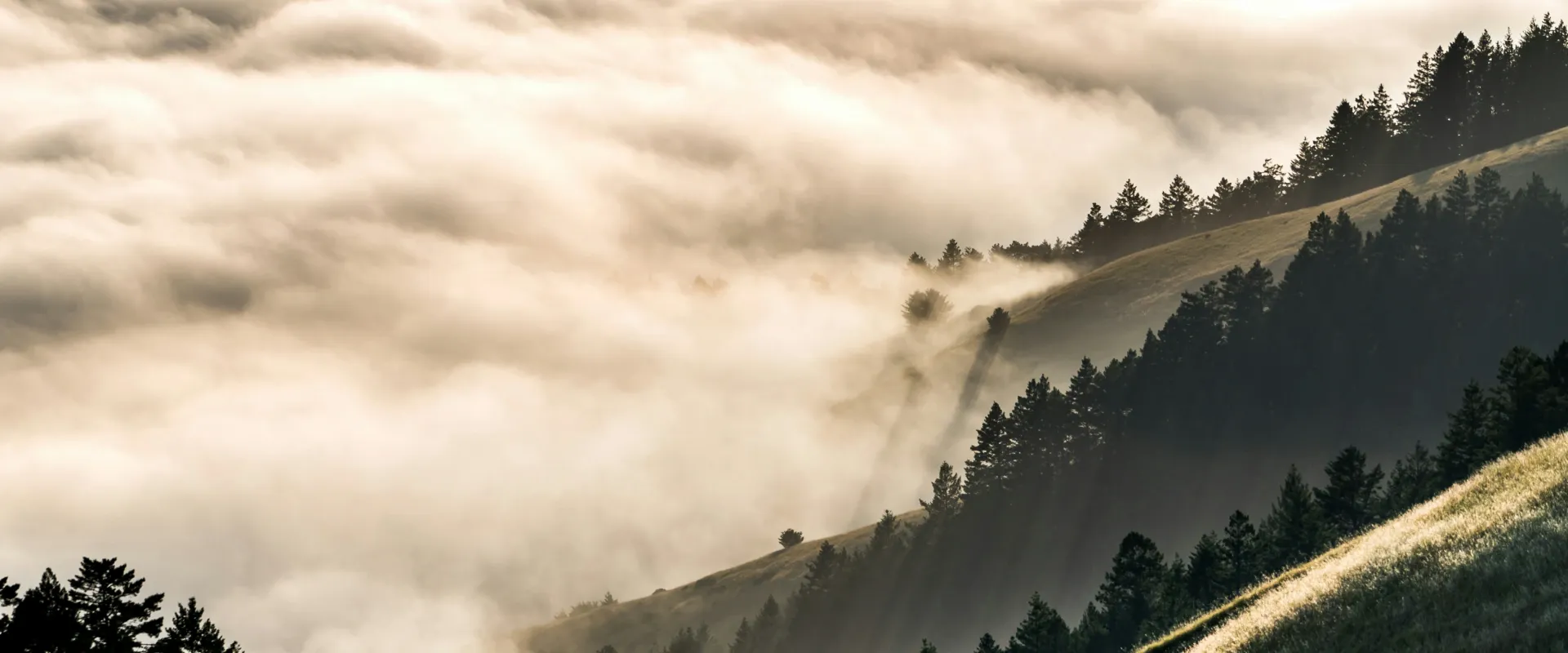
See Fireflies Flash Synchronously in Great Smoky Mountains National Park
It only happens when the conditions are just right: The air must be warm and thick with humidity, the sky dark—really dark—and the landscape wooded with clean water running through it. That’s when fireflies will spread their wings and flash their bioluminescent behinds.
For a brief time in late spring and summer, the fireflies’ mating display bathes forests and fields across the US, mainly east of the Rocky Mountains, in a mesmerizing twinkle. Of the 2,000-plus known firefly species in the world, about 200 are found in North America, and only three of those flash synchronously.

Whereas most backyard “lightning bugs”—all types of beetles, believe it or not—flash sporadically across the Midwest, Northeast, and South, synchronous species do so in a precise and uniform pattern, creating an even more wondrous sight in select pockets of forest along the Appalachian Mountain belt. And Great Smoky Mountains National Park is the best place to see them.
“To experience the breathtaking light show on a peak night in June can be one of life's natural world highs," wrote Lynn Frierson Faust in her book Fireflies, Glow-worms, and Lightning Bugs.
In the world of synchronous firefly research, Faust is regarded as the ultimate authority. Having grown up admiring the simultaneous flashing of the Photinus carolinus species at her family’s cabin in the Smokies’ Elkmont region, Faust was the one to shine a light on populations of synchronous fireflies when none were thought to exist in the entire Western Hemisphere. That was the '90s; now, she assists the national park in determining the narrow window of synchrony—two weeks only—that tens of thousands of people vie to witness every year.

It takes months of soil probing and careful attention to temperature trends to predict when the beetles will take flight, typically in late May or early June. The parade of light begins immediately as the insects race to procreate. The males attempt to attract females with a complex cycle of five to eight quick, coordinated flashes followed by six to eight seconds of darkness. Researchers have determined that males exhibit this meticulous flash pattern to let females know they’re the same species, not another type of firefly in the park.
“You’re expecting something a little bit like Christmas lights, but it’s not quite as precise,” says Dr. Raphael Sarfati, a Cornell University researcher who has spent multiple summers studying the phenomenon in the Smokies. At the peak of their display, the fireflies can be seen in multitudes—just “everywhere,” he says—but there are sometimes a few outliers that inevitably throw off the sequence. “It’s a little hard to comprehend with your brain when you see that, but it is very beautiful and intriguing.”

Over the decades, Photinus carolinus fireflies have been observed as far north as New York and as far south as northern Georgia, and another species of synchronous Photinus is well documented in the Carolinas as well. However, the Smokies remain “the epicenter for dramatic displays,” Faust says. “The very highest dramatic numbers are found in the regions around the Smokies in Tennessee and North Carolina.” Hundreds—if not thousands—of synchronous fireflies gather in this concentrated area for a brief mating frenzy so spectacular and sought after that the National Park Service has implemented a permit system to limit spectators.
Parking passes granting evening entry to the Elkmont viewing area are allotted via a lottery that opens in April and draws 20,000 to 50,000 applicants every year. The park gives out fewer than 1,000 passes total, about 120 per night of the event, to ensure that firefly mating is not disrupted and spectators have a positive experience.
“Once it's dark, the flashing of the fireflies is quite obvious,” says Emily Davis, Great Smoky Mountains National Park public affairs specialist and park ranger, who also says the best time to see synchronous flashing is between 9:30pm and midnight. The farther into the forests spectators go, the better the viewing conditions.
Viewing is optimal in a patch of woods between the Jakes Creek and Little River trails, which start near the Elkmont Campground and follow their namesake waterways. It’s on the banks of those streams where large numbers of fireflies appear to perform a choreographed dance in the forest. Imagine hundreds of tiny pinpricks transmitting Morse code in tandem or mimicking a sky of flickering stars right at your fingertips, all to keep their extraordinary species thriving for generations to come.
Getting there
- Great Smoky Mountains National Park covers more than 500,000 acres in North Carolina and Tennessee. Elkmont is in the north district of the park, best accessed from Gatlinburg via the Sugarlands Visitor Center. The closest airport is McGhee Tyson Airport (TYS) in Knoxville, Tennessee, about 25 miles from the Townsend entrance west of Gatlinburg. Make sure to rent a car to explore the vast park if you plan to fly. Note that parking in Elkmont is restricted during the firefly event. Only people with a reservation are permitted on the road leading to the campground and Jakes Creek Road after 4pm; that includes motorists, as well as hikers and cyclists.
- Average Going deal for cheap flights to Knoxville: $185 roundtrip
$350
How to do it
- Best time to go: In April, the National Park Service announces the dates of the firefly event, which typically lasts about eight days starting in late May or early June. The best time to witness the phenomenon during the designated window is 9:30pm to midnight.
- Cost: The lottery costs $1 to enter, then successful applicants are charged $24 for a parking pass valid for two nights. There is no fee to enter the national park.
- Tips and considerations: Dr. Sarfati says most people stay within the first quarter-mile from the trailhead, but he suggests walking farther along the trails for a more peaceful experience. The National Park Service stresses the importance of sticking to designated trails and limiting noise and light as much as possible for both the fireflies and other spectators. If you feel safer using a flashlight to get to a good viewing spot, choose a dim one, point it at the ground, and turn it off when you don’t need it. And although catching fireflies in a jar would certainly spark a sense of childlike wonder, the National Park Service says never to catch or touch the bugs.
More cool animal experiences around the world
Last updated March 19, 2024
Articles you might like
View All
Best Day Trips from San Francisco: 25 Trips You’ll Actually Want to Take (2026)
Jan 6, 2026
12 min read

30 Free Things To Do In San Francisco That People Keep Recommending
Jan 6, 2026
10 min read

Marrakesh: The North African City Where Storytelling Is an Art
Jan 5, 2026
5 min read






